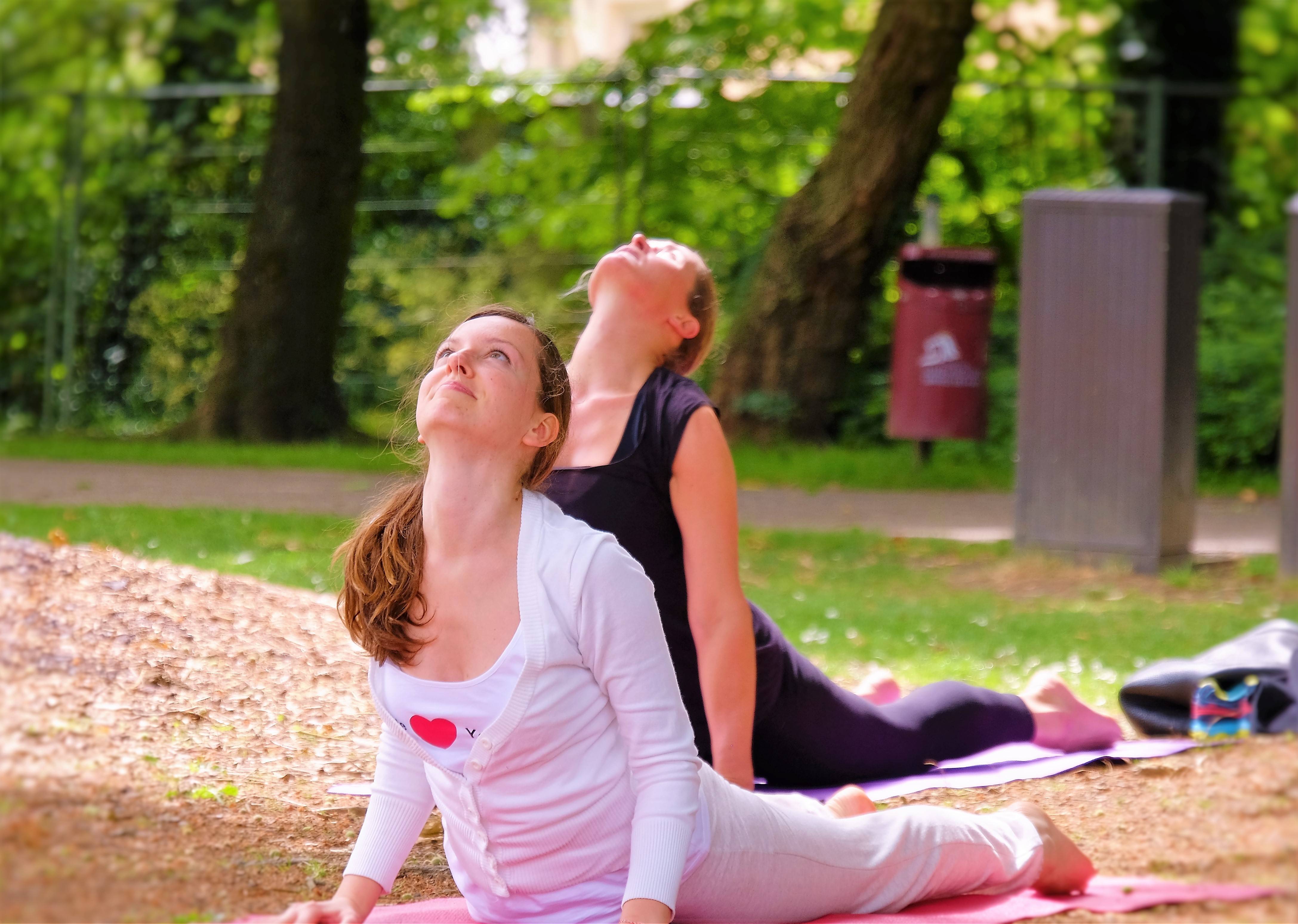
Sanskrit is the root of yoga, which literally means to combine or join. This union refers either to a union or fusion of mind and bodies, or to the integration of individual consciousness with universal consciousness. In India, yogic practice began in the early 20th century. Lord Shiva was the first known Yogi. He disseminated it via his writings. These books were translated into many different languages, and spread to diverse regions throughout the world.
Yoga began to gain popularity in Europe as a popular practice. The widespread distribution and use of yoga videos started in the early 1900s thanks to VHS tapes. The booming fitness industry and the Internet made yoga popular in the United States, and the spread of the practice was fast and widespread. The invention of the microphone in the 1990s and transatlantic flights made it possible for ideas to be spread widely and reached large audiences.
The history of yoga dates back thousands upon thousands of years. Although yoga was originally practiced for spiritual reasons, Westerners only discovered it in the middle of the 19th century. Swami Vivekananda was an Indian monk who traveled throughout Europe and the U.S. in order to spread the practice. He eventually taught yoga to the West, where it has been popularized in modern times. This is a wonderful way to learn all about yoga's past.

Yoga can be traced back to northern India, where it was first practiced in ancient times. The Vedas are the oldest of all the four Vedas and contain references to yoga. The Rigveda has over a thousand hymns, and 200 mantras. The Rig Veda was used as a guide by priests in the Vedic age to help them learn how to do yoga. Many Rishis refined the practice in later centuries and brought the modern version to life. The Upanishads offer great insight into the history and practice of yoga.
The first mentions of yoga were in ancient India. This is the beginning of the history of yoga. The practice evolved to include physical postures, also known as asanas. In the early 1900s, hatha yoga was popularized in the U.S., and many teachers began adding asanas to their classes. The 1970s saw the practice become mainstream and accepted all over the globe. The United States birth of yoga was the catalyst for its popularity and expansion.
The history of yoga is complex. Yoga dates back to 2000 BC. At that time, the practice was primarily concerned with the mind. It was then influenced by western gymnastics and the first Hatha Yoga practices were created. The practice evolved into Hatha yoga, which is a more body-centered version of yoga. Asanas are used in today's yoga to achieve this goal.
Yoga has a long history that goes back to ancient India. Yoga was practiced thousands of year ago and was vastly different from Vinyasa yoga classes today. However, by studying the history of yoga, you will be able to appreciate it more and understand it better. You will see that ancient yoga was not done in the same manner as modern-day Yoga. Yoga can be traced back to thousands of years, which will allow you to gain a deeper appreciation of it.

Yoga has a long history. Although the ancient yogis were mostly Hindu, they were heavily influenced by Hindu culture. In the west, yoga was largely banned by the British. Only after that, yoga was allowed to spread across Europe and the United States. During the late 1800s, gurus from India brought yoga to the United States. Asana can be described as a form meditation.
Asana is the core of all yoga practices. The practice of asana is ancient. The practice of yoga was spiritual and religious at its best in the 5th Century. Jainism and Buddhism were also considered ancient religions. The Classical Period saw the first systematic presentation of yoga beliefs and practices in Hinduism, Jainism. The popularity and influence of yoga grew over the centuries. But as with any new practice, the roots of it are still rooted in the same principles and ideals.
FAQ
What food should I avoid if I want to lose weight
Avoid trans fats. Trans fats can raise LDL (the unhealthy) cholesterol levels while lowering HDL levels (the good).
Trans fats can be found in fast food, deep-fried foods, packaged baked goods, snack cake, and other processed foods.
These unhealthy fats can also lead to inflammation, which can cause heart disease and diabetes.
Artificial sweeteners are also to be avoided. Artificial sweeteners may increase your chance of getting cancer.
These chemicals are found everywhere, from soft drinks to chewing candy to candy bars to chewing gum. They also appear in meat, poultry and eggs.
Artificial sweeteners can be saccharin or cyclamate, sucralose, sorbitol or aspartame.
The American Heart Association suggests that you avoid these chemicals as they can cause DNA damage in your cells.
Do Men Need A Gym Membership?
Men do not need a gym membership. You will get more value for your money if you join the gym.
Many gyms offer free trials that let you try the facilities before you pay any fees.
The gym is free to use whenever you wish, and there are no fees. It's easy to cancel your membership when you decide whether or not you love the gym.
Egg is good for men?
All nutrients are contained in the egg. It also helps maintain strong bones, a healthy heart and lungs, and stable blood pressure.
Eggs are a great source of protein, vitamins A and B12, D. E. K, calcium, magnesium, selenium and riboflavin.
The cholesterol content of egg yolks is high. The egg yolk does not contain saturated oil. Eggs contain less saturated fat than most other foods.
In addition, they are low in sodium and calories. Because they can be cooked in almost any way that you wish, they are versatile. You can cook them in many ways, including poaching, boiling, hard-boiling, baking, and scramble.
They are incredibly nutritious and easy to prepare.
Each day, you should consume at least 2 whole eggs. You can add eggs to your diet if you don't like eating eggs.
Essential nutrients are provided by eggs. You can add eggs to your daily diet now.
Which workout is the most effective for men
The answer to your question depends on the type of information you seek. Cardio workouts are great if you're looking to lose weight. They burn calories much faster than strength-training exercises.
On the other hand, if you just want to build muscle mass, then strength training is better since it increases lean body mass.
Both types can be used to improve your overall wellbeing.
I recommend HIIT (or sprint interval training) if you want to be fit quickly. This type of training can help you lose fat quickly and increase your metabolism. This type of training also increases your endurance, allowing you to train even when you are tired.
Is it true, that too much protein can cause kidney stones?
Protein helps maintain healthy bone and tissue. But consuming too much protein can lead to calcium excretion through urine. In turn, this can result in kidney stones.
Not everyone who eats more than 2g of protein per kilogram (2.2 lbs) of bodyweight will get kidney stones. Some people can eat high amounts of protein without getting kidney stones.
Watching your sodium intake can help prevent kidney stones. Sodium is important for maintaining the body's water balance. Too much sodium results in a higher risk of developing kidney stones.
You can also reduce your intake of proteins if you develop kidney stones. For most people, protein provides half their daily caloric requirements. A reduction in protein intake will likely result in weight loss.
If you do decide to eat more protein, don't go overboard. Aim for less than 20% of total calories from protein.
How do you lose weight?
It is not easy to lose weight. Many people give in to temptation because they don't know how to proceed.
However, there are some simple steps that you can take to shed those extra pounds.
First, you must ensure you eat fewer calories than you burn. You will gain weight if you eat more calories than you burn.
The second is to get regular exercise in order burn those calories. You have many options, including walking, biking, dancing and jogging.
Third, stop smoking and drinking alcohol. These habits cause you to consume more calories than you would otherwise.
Fourth, reduce your intake of fatty and processed foods. These can be replaced with healthier options like fruits, vegetables and whole grains.
Fifth, you should change your lifestyle to adopt new habits. It is possible to wake up at 5 AM to go to work, or to be more active before you get to work.
Sixth, discipline and following a diet plan are essential.
For those extra calories, you could join a class or go to a gym.
These simple tips will help you quickly see results.
Statistics
- Candidates and applicants must pass all four tests at 70% (minimum level) to graduate from Basic Deputy U.S. Marshal (BDUSM) Training. (usmarshals.gov)
- Get free shipping and 25% off today. (healthline.com)
- 10 pounds in a month is likely during a lean bulking phase, especially for beginners. (muscleandstrength.com)
- The PRS enabled risk stratification for overall prostate cancer and lethal disease with a four-fold difference between men in the highest and lowest quartiles (HR, 4.32; 95% confidence interval [CI], 3.16-5.89). (pubmed.ncbi.nlm.nih.gov)
- According to the American Heart Association, blood pressure should be checked at least once every two years, beginning at age 20. (my.clevelandclinic.org)
External Links
How To
How does a man become fit in just 30 days?
Breaking down fitness goals into manageable steps will help you reach your fitness goals.
You need to make sure you are working towards the goal each day. This could be as simple as doing 10 pushups and running for 3km.
Positive results will be achieved if you do this consistently over time.
The key thing here is consistency. You have to keep at it until you succeed!
What is the difference between Aerobic Fitness and Anaerobic Fitness?
Anaerobic fitness refers to the ability of our bodies to perform intense physical work without oxygen. During periods of high-intensity exercise, we use anaerobic pathways to provide enough energy to complete the task. Anaerobic pathways include glycolysis (creatine phosphate), the phosphagen and lactic acid.
Cardio fitness is, in contrast to aerobic fitness, the practice of sustaining low-intensity exercise. The primary source of energy for aerobic exercise is oxygen. The aerobic pathway is more efficient than the anaerobic.
You need to build up your aerobic capability if you plan on running a marathon. If you are only focusing on increasing your anaerobic capabilities, you won't finish the race.
Aerobic fitness also refers to cardiovascular fitness. Step tests and VO2 max testing are the most popular methods to measure cardiovascular fitness.
VO2 Max Test
The maximum amount of oxygen (O2) the body can use during exercise is called VO2 max. This test determines how much O2 your body can use during exercise.
This test measures cardiovascular fitness in a way that is most accurate. This test requires expensive equipment, and highly qualified professionals to administer.
Step Tests
Step tests can be used to assess cardiovascular fitness. They are easy and effective. They involve walking or jogging on a treadmill or track for a certain duration based on your age and weight.
These tests are simple to perform, cost-effective, and easily accessible from almost any location. You can for instance walk on a treadmill 2 minutes, then stop for 1 minute. You should maintain a constant heart rate throughout the session.
This method is called the Bruce Protocol. Bruce was himself a runner and developed the protocol after realizing his heart rate wouldn't increase when he ran for longer distances.